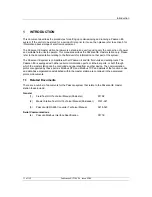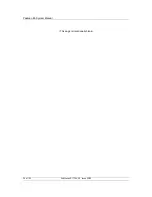
Functions
21 of 132
Publication S177E V2.0 Issue 12/04
communications failure to the last field unit on either side is taken as an indication of a fault. In the
event of a new fault, loop re-configuration is initiated.
5.3 Modbus Serial and Ethernet Interfaces
The Pakscan IIE master station is provided with two interfaces for data exchange with external host
systems. These may be a combination of one serial and one Ethernet, two serial or two Ethernet
connections. In addition one port can be selected for serial printer use. For Ethernet connections one
or more PS601, PS602, PS603 or PS604 modules must be fitted. In all cases the interfaces behave
similarly and always use Modbus RTU or Modbus TCP for the data communication protocol.
The master station's use of the Modbus RTU protocol is described in detail in the protocol documents
listed in section 1 (Related Documents). The master station may operate slightly differing protocols
data bases from each of its two ports. The protocols available are indicated on the set up screen
display, (see screen displays section). Modbus TCP behaves in a similar manner to Modbus RTU and
the register locations are the same for both protocols.
The two serial ports can both issue commands to field units via the master station, and to the master
station itself. Three separate registers of field unit alarms are maintained by the master station, one for
each serial or Ethernet port and one for the front panel display. This ensures that alarms cannot be
missed by any of the interfaces. If the host system is reading alarms from both the serial data bases it
must consider each one separately and perform the read and accept routines for each serial link.
Accepting an alarm on either serial interface does not accept the alarm on the display, or vice versa.
The alarm handling on the Modbus TCP Ethernet link is different. If the host protocol is selected as
Yokogawa then the alarm handling is exactly as for the RTU serial data and alarms are held until
accepted. If the protocol is selected as Generic then the Web Server will be populated with data; alarm
handling is similar to the other serial data bases, but now either the web server or the external
Ethernet host can accept the alarm on the associated data base. Effectively there is one alarm register
for the IP address and both the web server and host access the same register and accept the same
register.
5.4 Local User Interface (LCD and Keypad)
The Local User Interface allows the master station to be interrogated directly for its own status and
diagnostic information, and for field unit status. Various parameters may also be configured from the
front panel and commands sent to field units. The available screens are illustrated later in this manual.
















































